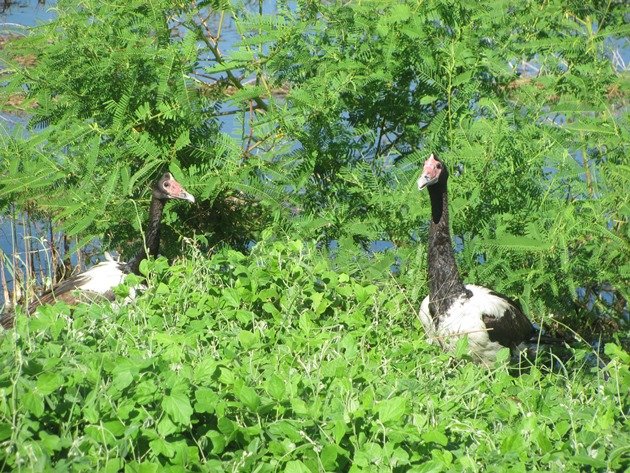
It has been a few years since we had a good Wet Season to really bring a decent amount of rain to Broome and surrounds. In early 2014 the rainfall was good and flooded the main highway south from Broome and made for some excellent birding from your car. The area remained flooded for several months in 2014 and there was significant road damage, but over the months the birding improved as more and more birds arrived in the area. After two particularly dry Wet Seasons we were all excited when the rain started and kept falling day after day and week after week. Stormy skies became part of the daily challenge of birding around Broome! Early in the Wet Season we had noticed the arrival of unusually high numbers of Magpie Geese and they are a species that don’t always make it to the Broome area if it is not a wet year. The numbers of Magpie Geese kept increasing and every visit we made onto the highway south of Broome we discovered not only more and more water flowing over the road, but more Magpie Geese. It did seem highly probable that the Magpie Geese would breed in the area this year.
This week we discovered that what we had suspected was indeed true. After slowing down at the Roebuck Roadhouse to just check there wasn’t a Hoopoe in the vicinity we continued slowly south along the highway. We had just gone through the first section of water and carefully negotiated the orange cones to prevent vehicles from falling into the deep holes in the middle of the bitumen. Suddenly a pair of Magpie Geese popped their heads up from the edge of the bitumen and the next thing we saw was a tumbling of brown feathers through the undergrowth. This was the first of many Magpie Geese families that we were to come across. The Magpie Geese have a knob on their heads and it is larger in the male bird and continues to grow during their lives. We affectionately call them “knob-heads”! Although Magpie Geese are birds that build a nest close to wetlands the reality this year was that the whole area became a wetland and the huge expanse of water must have been quite challenging for them. It is the male Magpie Goose that builds the nest and it would have been a floating platform, because there are no trees for them to build in across this expanse of flooded land.
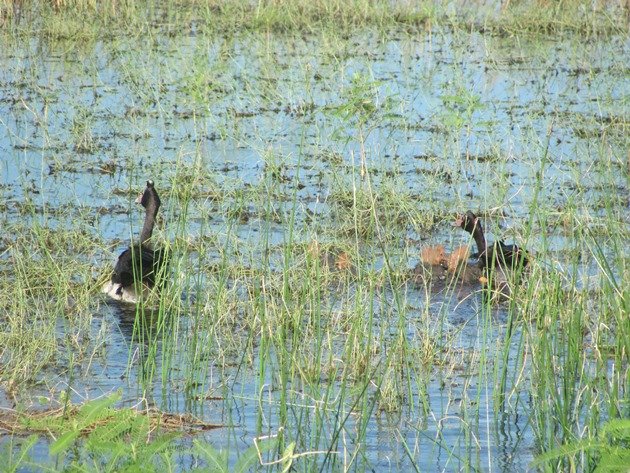
Magpie Goose family-two adults
It is believed that Magpie Geese mate for life, but often have two female partners. There were several family groups that included three adult birds, so we presume that these were male Magpie Geese that had two partners. Both of the female Magpie Geese would have laid their eggs in the same nest and there could have been up to sixteen eggs in the nest at any one time. The three adult Magpie Geese would have taken it in turn to incubate the eggs and they would have hatched after 24-25 days and after one day in the nest they would have moved off. The Magpie Geese are now all on the move with their young and have ample food after all of the rain and the vegetation is extensive. There is water as far as you can see and the families are swimming around in their family groups often very close to the road.
Magpie Goose family-three adults
The largest Magpie Goose family that we saw had ten young being cared for by three adults. There did appear to be more family groups with three adults rather than just two.
Ten young Magpie Geese with parents
It has been an excellent breeding season for Magpie Geese around the Broome area in recent weeks and hopefully for other bird species too! There is just so much water on the land now that we are unable to explore beyond the bitumen at the moment, but the months to come are looking very promising!


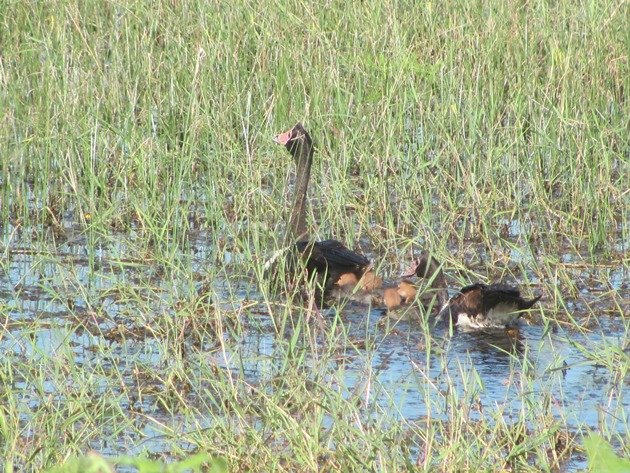
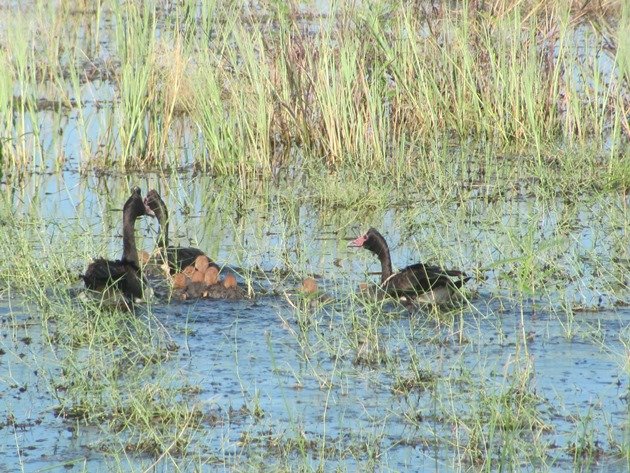
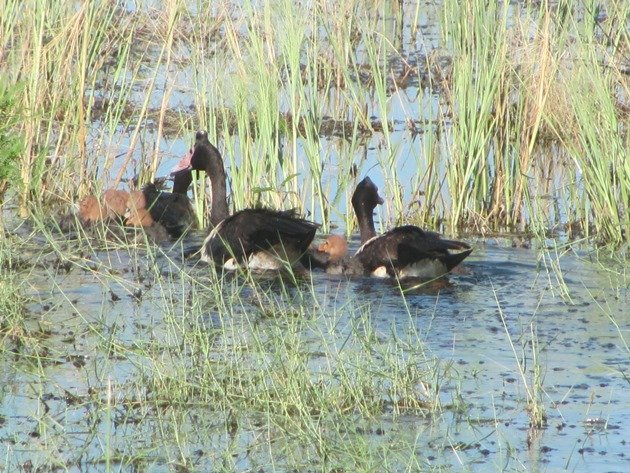
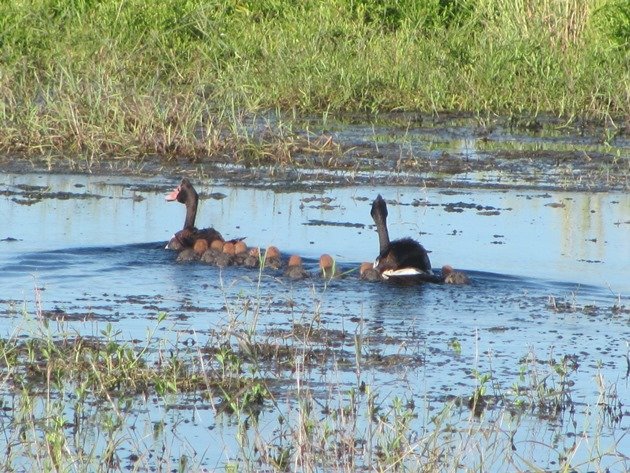











Leave a Comment